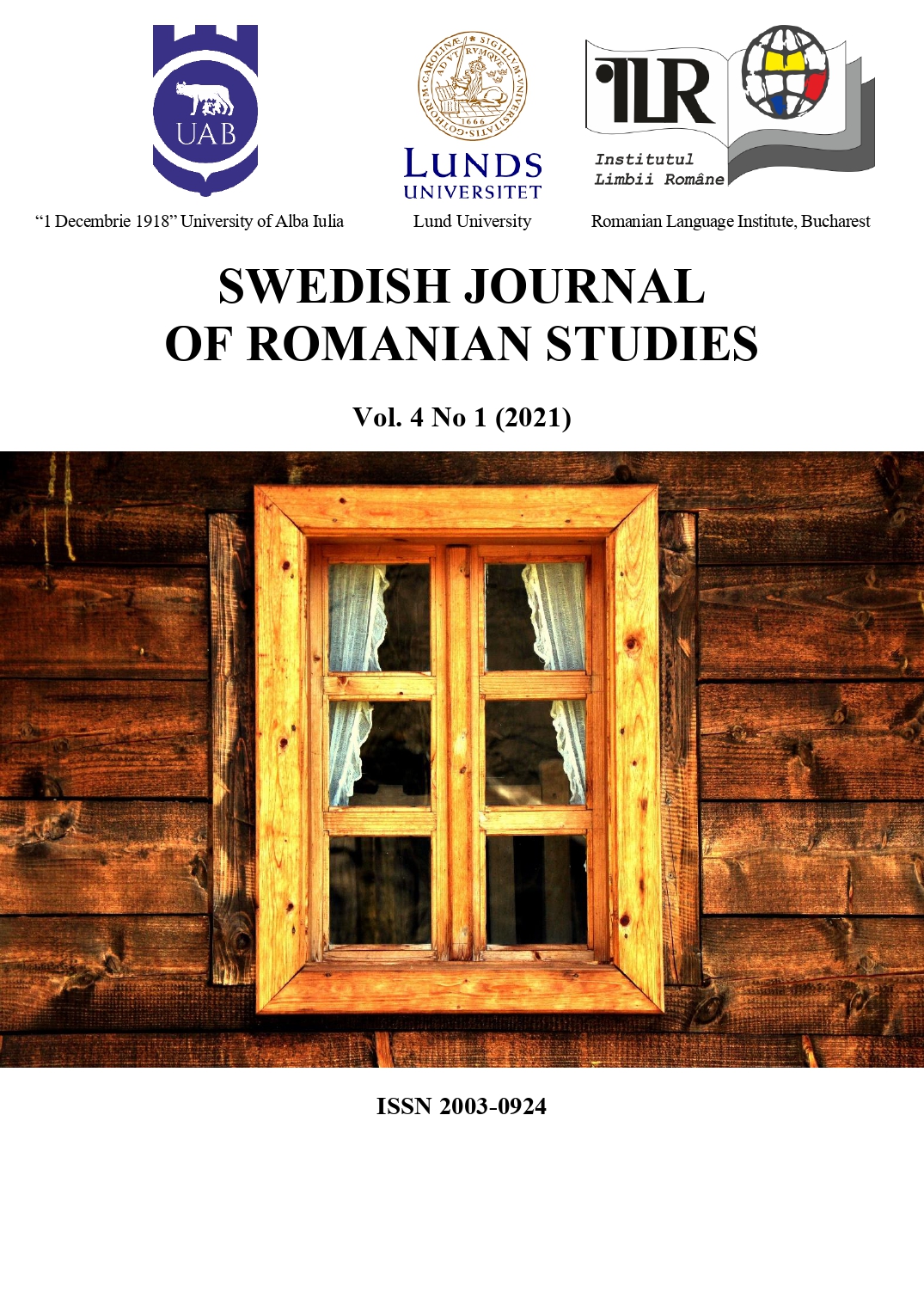The concept of bovarism illustrated by a postmodern prototype: Gheorghe Crăciun’s Pupa russa
DOI:
https://doi.org/10.35824/sjrs.v4i1.22387Keywords:
postmoderism, Romanian novel, Leon, Tina, bovarismAbstract
This paper aims to illustrate the concept of bovarism as defined by Jules de Gaultier at the end of the 19th century, as illustrated by Pupa russa, a postmodernist novel written by Gheorghe Crăciun. The thematic approach evinced by the Romanian author is challenging its readership because it follows a rhizomatic literary narration that also encapsulates a historical dimension.
The focus of the analysis is on the similarities and differences between Crăciun’s and Flaubert’s protagonists, Leontina Guran and Emma Bovary, and on the fascination and importance of the bovaristic trajectory, with its implications and dimensions. This critical angle unveils the novel’s message, as well as a heightened sense of awareness with regard to the realities of personal actions against the background of the communist regime.
The condition of the human being implies both outer and inner growth, yet there are several factors such as the societal conditions one is subjected to that can irrevocably change the future “I”. The episodes presenting LeonTina’s life are key elements, nodes of connections accessed by an objective and realistic eye. Therefore, all the observations are intended to clarify, to reveal the meanings and to outline the inner effects produced by a circular, closed social environment and how one can or cannot find one’s true way. The innate impulse of “becoming someone” can very easily be perceived as “becoming someone else”. Thus, the present critical approach is highly relevant to contemporary readers. The apparent freedom possessed by everyone in present times entails responsibility as well as danger. The present comparison is an example shedding light on some issues regarding bovaristic behaviour, which is more and more apparent in the real world.
References
Almeida, S.M. (2016). Theorizing the Local: Diversity, Race and Belonging in the City of Toronto. Retrieved November 30, 2020, from https://core.ac.uk/download/pdf/77106844.pdf.
Brombert, V. (1966). The Novels of Flaubert A Study of themes and techniques. Princeton, New Jersey: Princeton University Press.
Crăciun, G. (2004). Pupa russa. București: Editura Humanitas.
Deleuze, G., & Guattari, F. (1987). A Thousand Plateaus: Capitalism and Schizophrenia. Trans. Brian Massumi. Minneapolis, London: University of Minnesota Press.
Eco, U. (1986). Semiotics and the Philosophy of Language. Bloomington: Indiana University Press.
Gaultier, de J. (1993). Bovarismul. Filozofia bovarismului/Bovarism. The philosophy of bovarism. Iași: Institutul European.
Lakoff, G., & Johnson, M. (2003). Metaphors we live by. London: The university of Chicago press.
Porter, L. M., & Gray, E. F. (2002). Gustave Flaubert's Madame Bovary A Reference Guide. London: Greenwood Press.
Stephan, M. (2019). Defining Literary Postmodernism for the Twenty-First Century. London: Palgrave Macmillan.
Ursa, M. (2000). Gheorghe Crăciun monografie, antologie comentată, receptare critică/ Gheorghe Crăciun monography, annotated anthology, critical reception. Brașov: Editura Aula.
Online resources:
Popescu, R. (2018). Cuvânt şi viaţă în „Pupa russa” de Gheorghe Crăciun/ Word and life in Pupa russa by Gheorghe Crăciun. literomania. 55. Retrieved November 30, 2020, from https://www.litero-mania.com/category/numere-revista/nr-55/.
Downloads
Published
How to Cite
Issue
Section
License
Copyright (c) 2021 Bianca-Maria Bucur Tincu

This work is licensed under a Creative Commons Attribution-NonCommercial 4.0 International License.
Authors who publish with this journal agree to the following terms:
a. Authors retain copyright and grant the journal right of first publication with the work simultaneously licensed under a Creative Commons Attribution-NonCommercial 4.0 International License that allows others to share the work with an acknowledgement of the work's authorship and initial publication in this journal.
b. Authors are able to enter into separate, additional contractual arrangements for the non-exclusive distribution of the journal's published version of the work (e.g., post it to an institutional repository or publish it in a book), with an acknowledgement of its initial publication in this journal.
c. Authors are permitted and encouraged to post their work online (e.g., in institutional repositories or on their website) prior to and during the submission process, as it can lead to productive exchanges, as well as earlier and greater citation of published work (See The Effect of Open Access).

